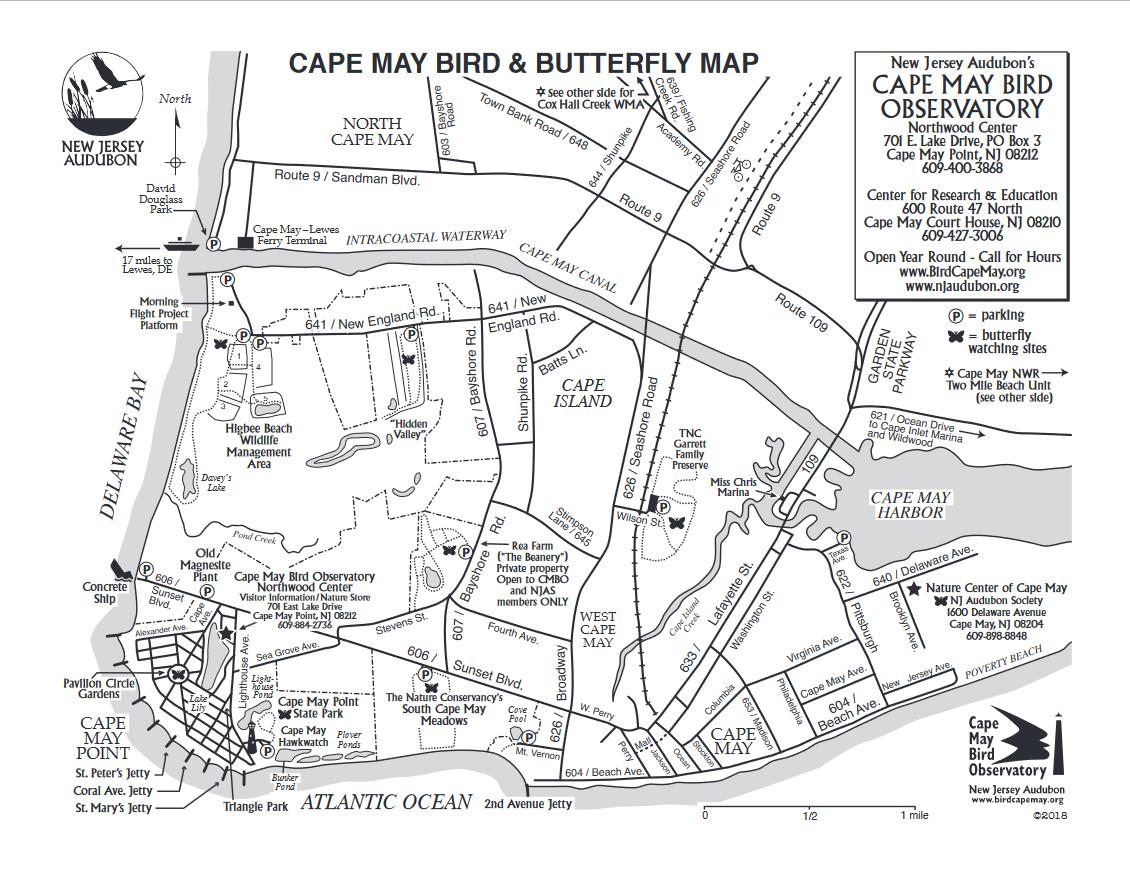Cape Island--South Cape May beach (CMPSP & SCMM)
Cape Island--South Cape May beach (CMPSP & SCMM)
Cape May Point Official WebsiteCape May Bird Observatory map
Cape May Point State Park Official Website
Cape May Point State Park map
South Cape May Meadows Official Website
South Cape May Meadows map
About this location
About Cape May Point
See all hotspots at Cape May Point
Situated at the southern-most tip of the Jersey Cape, Cape May Point is well known for its many natural attractions, serene beaches and historic sites. During spring and fall migration, this small Borough is home to more birds than residents.
Founded in 1875, Cape May Point was originally called Stites Beach and then Seagrove.
Cape May Point is a major migratory route along the Atlantic Flyway. Many sea/shore birds and songbirds migrate through this area in the spring. At the end of the summer, Dragonflies and Monarch Butterflies migrate through the area stopping briefly to gain their strength before continuing their journey across the Delaware Bay.
Cape May Point is part of the annual migration of the Horseshoe Crab along the Delaware Bay. Each year in late May, thousands of horseshoe crab come ashore to lay their eggs. These protein rich eggs are an important food source for Ruddy Turnstones, and Red Knots.
Cape May Point is considered the premier Hawk migration route of North America. In the fall hundreds of hawks are counted as they pass the narrow corridor of land along the Cape May peninsula heading south. This offers birdwatchers of all ages the opportunity to see these beautiful birds in flight as they soar across the fields and meadows, on their southward trek across the Delaware Bay.
About Cape May Point State Park
See all hotspots at Cape May Point State Park
Cape May Point State Park is one of North America's most popular sites for bird watching and a natural route for migratory birds.
Cape May Point State Park has 244 acres of freshwater meadows, ponds, forests, dunes, and beaches. Just a short bike ride from historic Cape May, the park is best known for the famous Cape May Lighthouse, a World War II gun battery and fire control tower, world-renowned fall bird migration, monarch butterflies, and Cape May diamonds. Thousands of visitors enjoy beach walking, hiking, birding, and fishing annually. Nature programs are available. The lighthouse and fire control tower are open seasonally and are administered by the Mid-Atlantic Center for the Arts and Humanities.
About South Cape May Meadows
See all hotspots at South Cape May Meadows
Located at a critical point on the Atlantic Flyway, the 200-acre South Cape May Meadows preserve is a haven for native and migratory birds, and a globally renowned paradise for birders. The site's protected habitat provides foraging and resting habitat for birds traversing the Delaware Bay and also supports a wide variety of avian and terrestrial species year-round.
Flat, walkable trails more than a mile long cut through lush meadows that put on a spectacular flora-and-fauna show in every season, with the charming Cape May lighthouse as a backdrop. The varied landscape boasts dunes, fields, freshwater wetlands, and a full mile of undeveloped, protected beach, a rarity on the heavily developed New Jersey shoreline, and wildlife viewing opportunities abound.
The welcome center has an interactive kiosk that visitors can use during their time at the preserve. The kiosk features the preserve's ecology and history, the calls of local birds, an interactive preserve map, and much more. The trail system provides visitors with wildlife viewing opportunities through the preserve’s many habitats including the undeveloped protected beach, a rarity on the heavily developed Jersey shoreline.
Content from Cape May Point Official Website, Cape May Point State Park Official Website, and South Cape May Meadows Official Website
Last updated February 26, 2024
 Cape May Bird Observatory
Cape May Bird Observatory
